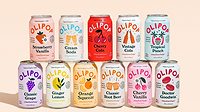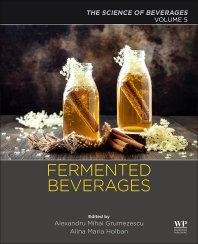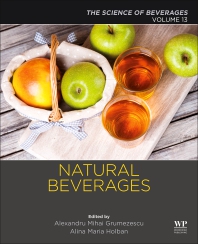Marketplace growing for bone health




Touting improved joint health, YouTonics collagen protein supplements offer a B complex formula and vitamin A and E formula, the company says.




The 1980s commercial tagline: “Milk. It does a body good” helped to educate the American population about the health benefits of milk. However, the wellness-boosting nutrients found in milk, such as calcium and vitamin D, are not limited to what you find in the dairy aisle at the local grocery store. Increasing education about the importance of nutrients for bone health has expanded in the beverage marketplace to provide consumers of all ages and demographics the ability to give their bones what they need.
Although they are typically associated with the need for developing and strengthening bone mass, the 55 and older demographic is not the only one that should be concerned about bone health. According to the National Osteoporosis Foundation (NOF), Washington, D.C., about 85 to 90 percent of bone mass is acquired by age 18 in girls and age 20 in boys.
“Bone structure formation is important at any age,” says Al Vega, manager of research and development for the nutritional laboratory with Watson Inc., West Haven, Conn. “Improper consumption of nutrients for bone formation and structure maintenance increases the risk of bone loss, and in later years can create malnourished bone structure. Bone formation is a process that requires a constant intake of nutrients such as calcium, phosphorus, magnesium and vitamin D.”
Among the more well-known diseases associated with low bone mass is osteoporosis, which can result in fragile bones with an increased susceptibility to fractures. For an estimated 44 million Americans, or 55 percent of the population 50 years of age and older, osteoporosis is a major public health threat, according to the NOF. The foundation also states that in the United States, 10 million people are estimated to have osteoporosis today, 8 million of which are women.
“Bone health has cross-demographic appeal to men and women of all ages, but it is particularly popular with women and the aging population,” says Yuchu Zhang, director of innovation with Glanbia Nutritionals North America Inc., Carlsbad, Calif.
Schenectady, N.Y.-based Fortitech Inc.’s Cathy Arnold, senior formulation scientist supervisor, says that although women and adults ages 60 and older have been the focus of bone and joint health in the past, a rising number of men and younger adults are being diagnosed with osteoporosis or are at high risk due to low bone mass.
“A body of information exists supporting that most people around the world do not get enough calcium or vitamin D, [including] children under 11, and particularly noting a deficiency in African American and Hispanic children in the United States,” she says. “The wide spectrum of deficient populations, in turn, increases the necessity for product innovation and demographic-appropriate product development.”
Innovating the market
Although dairy-based beverages are among the popular categories for bone health fortification, companies are receiving requests across a broad spectrum of products.
“We have seen more and more requests from those that manufacture juice and to some extent, enhanced waters,” Fortitech’s Arnold says. “In terms of a format that is prime for success, we would venture to say that powdered beverages in the form of stick-packs are an area of opportunity. These are convenient, portable formats that can create on-the-go, health-promoting drinks that can address bone health as well as a myriad of other health conditions.”
Allergens, convenience and personal choice can be some of the factors that prevent consumers from ingesting the recommended amount of nutrients to support bone health, Glanbia’s Zhang says.
“Fortified beverages can play a supportive role in delivering these nutrients in a convenient and condition-specific manner,” she says. “Bone health beverages can be created according to demographic appeal and formulated with nutrients to meet the needs for different age groups for bone health.”
Zhang adds that milk is the most popular natural calcium source with 300 mg. of calcium in an 8-ounce serving; however, other beverage categories are fortifying products with calcium.
“Fortified orange juice can have as much calcium as a glass of milk,” she says. “In some dairy milk alternatives, such as milk with lactose removed, calcium content is not effective. However, many other alternatives such as soy, almond or coconut milk are fortified with calcium.”
In addition, Zhang says smoothies and drinkable yogurts have prospered in the marketplace because their complete nutrient matrix is similar to meals, which improves absorption and bioavailability of bone health nutrients. She also foresees possible success from tea and coffee-based beverages. Citing a research review, Zhang says the bioactive ingredients in green tea might protect bone integrity by improving strength and bone metabolism.
Working together
When it comes to formulations designed to help prevent osteoporosis, the NOF recommends doing regular weight-bearing and muscle-strengthening exercises, as well as getting the recommended daily intake of calcium and vitamin D.
“There have been some juice-based products that have launched in the market that have added calcium to support bone health positioning,” says Todd Sitkowski, senior marketing manager for DSM Nutritional Products, Kaiseraugst, Switzerland. “However, without the addition of vitamin D, the absorption of calcium into the bone will be limited.”
Vitamin D improves bone mineral density through calcium absorption, he adds. Because of the working relationship between the two, vitamin D and calcium are commonly associated with each other in regard to strengthening bones.
“Calcium is the key building block for your bones, while vitamin D is the ‘key’ that unlocks the door to your bones and allows them to absorb calcium,” Glanbia’s Zhang says.
The NOF recommends consumers younger than 50 to get between 400 and 800 International Units (IU) of vitamin D every day. For those 50 and older, it recommends between 800 and 1,000 IU every day.
Vitamin D supplementation is available in two types: vitamin D2, also called ergocalciferol, and vitamin D3, also known as cholecalciferol — both of which are good for bone health, the NOF says.
For use in beverage applications, Glanbia’s Zhang says that a water-dispersible form is typically chosen for vitamin D. Microencapsulation also can be used to protect vitamin D from oxidation, manufacturing conditions and a wide range of pH in beverages, she adds.
Watson’s Vega says that suggested daily supply levels for calcium vary depending on demographics at the following ranges: ages 4-18 at 800 to 1,300 mg. a day; adults ages 19 to 50 at 1,000 mg. a day; ages 70 and older at 1,200 mg. a day; and pregnant and lactating women at 1,000 mg. a day.
Fortitech’s Arnold says a number of forms of calcium are available to increase a product’s calcium content.
“Food products, such as fruit and fruit juice, infant food, health foods and sports beverages, are most often fortified with calcium and other minerals,” she says. “The challenge for formulators is to select an appropriate form of calcium that delivers the desired level of the mineral without affecting flavor, solubility, bioavailability, sensory properties and the mouthfeel of the finished product.”
Calcium carbonate is one of the most cost-effective sources of calcium, Arnold says. However, it has a tendency to have a chalky taste and gritty mouthfeel, as does dicalcium phosphate, she adds. “Some of these processing issues can be prevented if a blend of calcium sources is used instead of a single source,” Arnold says.
Because forms such as calcium carbonate and dicalcium phosphate are not very soluble, adding calcium citrate or organic acid could improve solubility, she says.
“In order to get the most out of these salts, a manufacturer has to decrease the pH to solubilize, which causes absorption to increase,” Arnold says. “In general, in order to have more absorption, it is necessary to have soluble calcium salts, but there are advantages and disadvantages to either soluble or insoluble forms. For example, calcium gluconate is soluble but may interact with other ingredients in the product and impact the flavor.”
More to the mix
Although calcium and vitamin D might attract a lion’s share of the attention when it comes to bone and joint health, ingredient suppliers are working with and developing a number of products to address this growing concern.
Westchester, Ill.-based Corn Products International Inc. and its subsidiary National Starch provide Aquamin, a calcified mineral source that is a natural multi-mineral marine complex derived from the mineral-rich red algae Lithothamnion calcareum, which is responsibly harvested from the north coast of Iceland, says Patrick Luchsinger, nutrition marketing manager with Corn Products International.
“As a multi-mineral, Aquamin provides a unique combination of up to 74 minerals, such as calcium, magnesium, phosphorous, iron, fluorine, manganese, boron, zinc [and] copper, which are recognized as important for optimal bone health,” he says.
Clinical studies indicate that Aquamin can suppress parathyroid hormone release, which triggers calcium release from the bones, Luchsinger adds.
Prebiotic fiber also is another ingredient associated with increased calcium absorption, Luchsinger says. Corn Products offers its natural prebiotic fiber NutraFlora short-chain fructooligosaccharides, which is derived from beet or cane sugar using a patented process, non-genetically modified organisms and a traditional natural fermentation method, the company says.
“Scientific studies show that about 3 grams of NutraFlora per day may significantly and immediately improve calcium and magnesium absorption in human subjects, which may help to reduce the risk of osteoporosis,” Luchsinger says.
Glanbia’s Zhang says other minerals can have an indirect bone health benefit. Potassium could help to protect against the loss of calcium in urine, and several human studies have suggested that magnesium supplementation might improve bone mineral density, she adds. Glanbia offers TruCal, a milk-mineral complex sourced from dairy that contains the mineral ratios found in bones and includes magnesium, calcium and phosphorus, Zhang says.
Vitamin K also is associated with bone health and has a link to vitamin D. “Vitamin K can not only increase bone mineral density in osteoporotic people, but also reduce fracture rates,” Zhang says. “Further, there is evidence in human intervention studies that vitamins K and D work synergistically to improve bone density.”
Lipid-soluble vitamin A also can be important for building strong and healthy bones, she says. The bone building cells, osteoblasts, and bone breaking-down cells, osteoclasts, are influenced by vitamin A; however, most clinical research has linked higher levels of vitamin A with lower bone density and increased fractures, Zhang adds.
Studies also have linked increased levels of vitamin C with greater bone density, she says. The vitamin is essential for the formation of collagen: the foundation that bone mineralization is built on, Zhang says.
Similar to the synergy between vitamin D and calcium, other nutrients also could provide benefits for bones when combined.
“A combination of vitamins B6, B12 and folic acid may also help to decrease the risk of osteoporosis by reducing the concentration of a substance in the blood — homocysteine,” DSM’s Sitkowski says. “Some studies have suggested that high levels of homocysteine in the blood are associated with poor bone health.”
In addition, he says, magnesium, zinc and phosphorus are key minerals that compose a matrix of the bone and are essential for its health. Those minerals, coupled with calcium, vitamins D, K, B6, B12 and folic acid, work together to maintain healthy bones, Sitkowski says.
Outside of the vitamin and mineral classification, ingredient suppliers also are providing beverage-makers with forms of glucosamine to address joint concerns.
“An active lifestyle, participation in impact sports and aging can wear down joint cartilage and cause joint pain,” says Mike Fleagle, brand manager with Cargill Corn Milling North America, Minneapolis. “Glucosamine is used by millions of people who believe it promotes mobility and joint health.”
Cargill offers its Regenasure glucosamine, which comes from a vegetarian source and has generally recognized as safe status in the United States, the company says. Regenasure can easily be incorporated into beverages that consumers already enjoy, Fleagle says.
“According to a Gallup study of joint health and glucosamine, 58 percent of users expect to use [glucosamine] the rest of their lives,” he says. “Consumers are still looking for alternative means to supplement their bodies versus tablets and capsules. We believe there is a continued trend to more functional foods and beverages.”
DSM’s Sitkowski also sees the importance of fortification in beverages for bone health.
“Bone health is a top consumer health concern and the market for bone health-positioned products is increasing due to an aging population around the world,” he says. “Beverages, particularly dairy and juice-based, are ideal vehicles for bone health solutions, especially considering that both are allowed to add certain levels of calcium and vitamin D — two key nutrients supporting good bone health.
“When you factor that nearly 70 percent of all Americans consume less than the recommended intake of vitamin D, and that due to lifestyle changes and the inability to get the proper levels, even in a balanced diet, the introduction of fortified beverages positioned for bone health are very marketable products,” he continues. BI
Looking for a reprint of this article?
From high-res PDFs to custom plaques, order your copy today!












